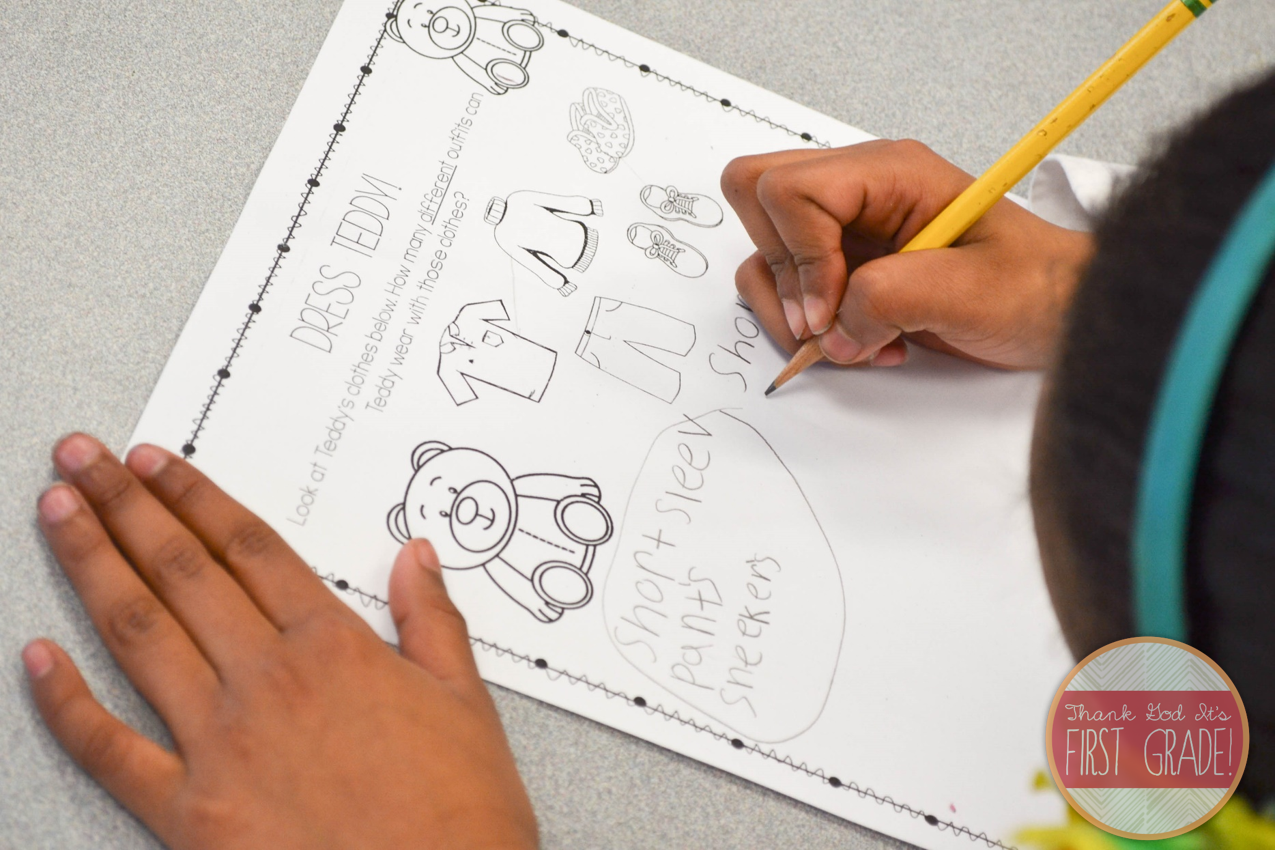Our day in first grade is long! We have extended hours from 730-330 so we have plenty of time to teach what we need to get our first graders on grade level. I thought I would share a little about a day in our life:
Before school:
My alarm is set for 4:38 am. I wake up and get to the gym by 5am. I workout and watch the news then shower and get dressed at the gym. I am outta there by 6:15! I stop at Starbucks and show up at school around 7am to write our morning message and get everything in order before the bell at 7:28!
7:30-7:50: Morning meeting
Every morning when we come in, we meet on the mat in a circle and follow a morning meeting routine. We first greet one another using eye contact and a handshake of some sort (sometimes a "pound it" and sometimes a secret handshake). Then we complete the interactive morning message which reviews what we have been learning in class!
7:50-8:20: Phonics
My class has been reviewing our digraphs before we go back and review consonant blends. We have been adding plenty of poems to our poetry journals to help us read with fluency! We will always start on the mat blending words with that digraph, then students go back and receive their poem to read, whisper read, and buddy read. The next day, my kids get their real or nonsense page to decode more words with that sound!
8:20-9:25: Reader's Workshop
We have been inferring all sorts of things about our characters lately and using that sentence stem to help us talk about our text. We spend about 20 minutes reviewing and doing my guided lesson. Then, my students practice the skill through some turn and talk before going back to their reading spots to read independently for 20-30 minutes. Lastly, my students do some buddy reading and we close the lesson!
During independent reading, I pull my small guided reading groups. We have been focusing on close reading as we get ready for 2nd grade. We have been reading, re-reading, and answering questions using evidence from the text.
9:25-9:40: Morning recess
(self explanatory)
9:45-10:20: Writer's Workshop:
Our writer's workshop is set up the same basic way as reader's workshop. I will do a guided lesson and add my focus skill to my teacher writing. Then, my students will share how they will incorporate that skill into their writing with a partner before they go back and write independently.
We have been publishing our reviews and my goodness they are SO cute! I love reading all their reasons for why they love something.
10:25-10:50: Science/Social Studies

We receive FOSS science kits at our school, so whenever we don't have a science kit, we teach a Social Studies unit. Currently we have received our insect unit and we are learning all sorts of insect facts before our meal worms arrive!
(They are completing a little sentence scramble from my insect freebie:
HERE)
10:55-11:35: LUNCH/RECESS
(self explanatory)
11:40-12:20: Handwriting/Interactive Read Aloud
I don't have pictures of this, but we use Handwriting without Tears for the first 20 minutes and then the second 20 minutes, we do an interactive read aloud. An interactive read aloud is a planned, purposeful read aloud in which we use a mentor text to practice a certain skill and have stopping points to discuss! This is when we capitalize on our accountable talk:
12:20-1:20: Calendar/Math Workshop
We start with calendar, move to a "math warm up" which I usually have us quickly practice our math facts through Quiz-Quiz Trade with flashcards or a game of
I have, Who Has? Then move to our guided lesson. We have currently been learning about 2D shapes, their sides, corners, how to sort shapes, where we see shapes, etc. After I teach my lesson, my students do math tubs to reinforce the skills we have learned.
One tub is our pattern block shape fill-ins from Investigations!
These last two tubs come from my friend Laura's, new pack:
Shape Soup.
My kids thought it was SO fun to pick out the shape vegetables and sort them into the right soup can!
1:25-2:30: Specials/Prep time
Students go to one of the following specials:
Library, Gym, Art, Music, Dance, or Safe & Caring
2:35-2:45: Snack
School provided snack.
2:45-3:25: Intervention/Acceleration Block
During this time, all the students in 1st grade are split into ability based groups among the teachers and all our interventionists. This times is dedicated to teaching homogenous, smaller groups the skills they need to work on to either catch up to grade level or continue accelerating their learning.
3:30- Dismissal!
And there you have it... that is what our day looks like!
Happy weekend :)
Link up with Reagan over at Tunstall's Teaching Times so I can see what yours looks like!






























































